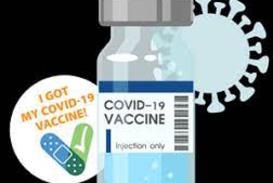HOW CAN HEALTHCARE PROVIDER ORGANIZATIONS KNOW WHEN TO SAY NO TO NEW APPS?
by John G. Baresky on 09/18/20
New healthcare apps
overwhelm the market
The shelter-in-place and social distancing
elements of the pandemic escalated the growth trajectory of healthcare mobile applications around
the world. Smartphones have more than proven their usefulness prior to COVID-19 and now developers continue to churn out new health and wellness apps
daily.
Numerous technology companies have recognized these opportunities and invested considerable staff, financial and technical resources to pursue the enormous commerical opportunities involved. They have committed themselves to the health and wellnes sector with their advanced and convenient to use software applications and devices from Amazon, Apple, Google and others.
Healthcare provider organizations have followed suit by developing numerous applications supported through various digital means to demonstrate their ability to innovate, account for tech-friendly consumer needs and compete against other patient care providers. Some are merely "mobile friendly" to enable patients to access website resources more easily. Others are more sophisticated and specialized -many with unproven ROI track records.
A lineup of patient care and consumer health & wellness app examples:
Patient demand
continues to encourage more customer-centric mobile apps that help with a myriad
healthcare tasks:
- Schedule appointments with clinicians at medical groups, hospitals, health systems, specialty practices, urgent care centers and even retail pharmacy clinics
- Virtual apppointments (telehealth and telemedicine) conducted in a "Facetime" setting between patients and clinicians
- Prescription refill requests at retail, mail order and specialty pharmacies that also include deliveries
- Exercise and activity fitness trackers abound that span smartphones and wrist-bound wearables
- Numerous apps focused on specific healthcare conditions and patients including asthma, diabetes care, heart health, oncology
Healthcare provider organizations reap the benefits or shoulder the burden from the apps they develop
Apps are a great way for healthcare provider organizations to extend their care and promote their services. It's an opportunity to generate data that a consumer or patient can benefit from whether it's for their eyes only or if the data is also shared with their clinicians. Depending on the level of clinical involvement and patient data capture nuances involved, medical professionals are being reimbursed by commercial and government payers for this additionl patient care support.
Considering the array of care even modestly sized medical groups offer, hospitals and health systems deliver an even greater abundance of patient treatments that apps could be developed for.
The benefits of apps are attractive but there are immediate and ongoing costs to provide them. Once apps are developed they need to be sustained through upgrades as enhanced accuracy, improved technology performance, privacy, security standards and threat levels change. Healthcare provider organizations have to consider the cost, time and technical resources necessary to develop, launch and manage apps their own apps through the duration of their clinical and technical lifecyvle.
Questions for healthcare providers to ask themselves in advance of developing new apps
The increasing use of healthcare apps is going to continue by consumers and patients. Healthcare provider organizations need to evaluate what opportunities suit them and their patients best in terms of care and cost.
Key considerations for medical care providers to be informed of when assessing the development of a new app:
- What is the estimated numer of consumers or patients that will benefit from it?
- Is the critical medical need involved for the app at a high enough level to warrant its development costs and use?
- Are there free or low cost apps already available in the marketplace that provide comparable data and care support for consumers, patients and clinicians to use?
- Can the clinical, financial and technical elements requirements to develop and support the app be sustained by the healthcare provider organization's resources?
- Is there an application the healthcare provider organization already has that can be enhanced with additional features to avoid having to develop an entirely new app?
The future holds greater opportunities for patient care innovation
Technology continues to outpace itself as smartphones, fitness trackers and highly portable FDA-approved medical devices become more sophisticated and less costly. Remote patient monitoring, telehealth and telemedicine are additional catalysts in creating more demand for apps by consumers, patients and medical professionals.
Moving forward, healthcare provider organizations need to carefully think about where they deploy their resources to be certain they are allocating them to support the care needs they can best serve and rely on other stakeholders to account for the others.

